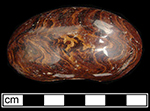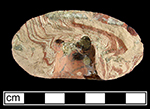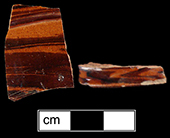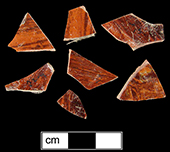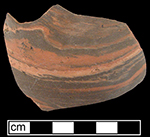Click on each thumbnail to view larger image.
Agateware
Smith St. Leonard 18CV91
1711-1754 Plantation
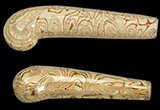
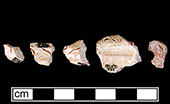
Fragments from agateware cutlery handle, similar to complete examples shown to left.
Agateware handles were an important product for the Whieldon-Wedgwood partnership of 1754-1759.
As early as 1749, Thomas Whieldon is recorded as supplying “32 dessert handles” (Simeon Shaw 1829).
Hanley 9
Collected by George L.
Miller in 1986 in Staffordshire, England. Cannot be attributed to a specific pottery.
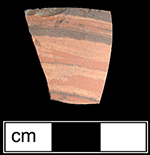
Biscuit fired thrown agateware sherd
in
unidentified hollow form, probably
a teapot
or jug. This waster sherd is
comprised of the
blending of three
different clay colors and
was
discarded prior to glazing.
saucer. This waster sherd is comprised of
the blending of three different clay colors and
was discarded before being lead glazed
and fired a second time.
Unidentified hollow vessel in thrown agate.
Private Collection
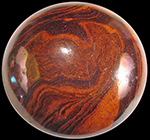
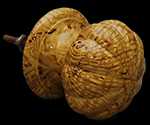
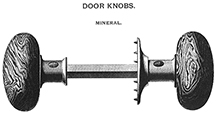
Agateware (or mineral) doorknobs appear regularly in hardware trade catalogs during
the second half of the nineteenth century.
Examples can be found in the Illustrated Catalogue of American Hardware of the Russell Erwin Manufacturing Company, 1865, as well as other hardware catalogs.
This undated illustration from
a second half
of the nineteenth
century trade catalog was
taken
from A Price Guide to Victorian
Houseware Hardware and
Kitchenware.
Ronald S. Barlow.
Windmill Publishing Company, 1992.
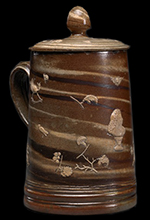

Laid Agate -

was made by Fulham potter John Dwight,
circa 1685-1690. The figural and floral
elements are sprig molded designs.
This vessel is owned by the Nelson-Atkins Museum of Art, Kansas City, Missouri. Accessed at http://en.wikipedia.org/wiki/
John_Dwight_(potter)
clearly shows the spiraled effect of
the different clays, created by forming
the vessel on a potter’s wheel. George
L. Miller Collection at the Maryland
Archaeological Conservation
Laboratory. Gift from David Barker.
Lead-glazed agateware cream jug,
Staffordshire, ca. 1750. H. 10".
The body of this jug was formed in a two
piece press mold. (Chipstone Foundation.)
Back to: Top | Ware Description
